The Etruscan tomb paintings and sarcophagi were formed into small grave mounds that were used to save dead bodies during the burial process. The Etruscans were isolated from other cultures.
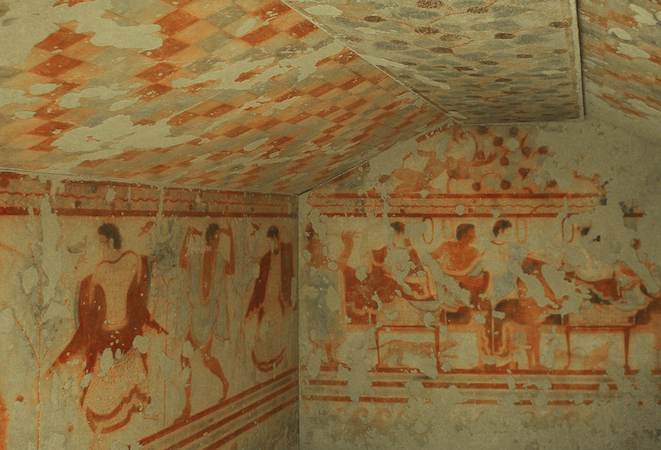
Tomb Of The Triclinium Article Khan Academy
However there could be different themes and they were more painted towards the afterlife.

. The Etruscans were a civilized society living in Italy during the Bronze and Iron ages. Terra cotta portraits like this were usually made as offerings to the gods. The Tomb of the Reliefs is an Etruscan tomb in the Banditaccia necropolis near Cerveteri Italy.
It was discovered in 1847 and has been dated to the end of the 4th century BC. During the Etruscan civilization faith was the driving force behind the art. Some of the Egyptian tomb paintings were used to please the people who were buried in the tombs.
This wall painting from the Tomb of the Charuns or Demons shows a typical appearance of Vanth left and Charun right either side of a door in an Etruscan tomb although here the door itself is painted rather than an opening. The colors became dark and the scenes somber. Summarizes recent work that now has determined more precisely the span of Etruscan tomb painting.
In the southern part of the Etruscan empire most tombs housed sarcophagi while. The Etruscan tomb paintings were much more stylized than the Egyptian period. It is a unique example of an Etruscan tomb which is decorated with stucco reliefs instead of the usual frescoes.
When thinking of Rome most of us think of Romans. This section also begins to tackle two major problems. What two materials were Etruscan sarcophagi usually made from.
The grave mounds were in a vast amount so it seemed to resemble a tiny town of many mounds. The Etruscans paintings were full of happiness and peace as their family and ancestors enjoyed their time in the afterlife. The majority of wall paintings at funerals and burials were made up of funeral flowers and tissues.
The art of the Etruscans who flourished in central Italy between the 8th and 3rd century BCE is renowned for its vitality and often vivid colouring. That very few Etruscan painted tombs are found intact and that the iconography is more difficult to interpret than previously believed. Frescoes adorned the walls of the tombs.
Unknown Wall painting in the Tomb of the Charuns or Demons further details not known. Every level of Etruscan society had frescoes on their tombs. This shows that these roofs might corroboration between the banqueting motifs equally be compared to domestic structures.
The tombs were typically carved from living rock with walls windows and doorframes all decorated with household objects the dead might need in the afterlife. Etruscans like Egyptians painted their burial chambers with scenes reminiscent of fond activities during life and scenes hopeful of a pleasant afterlife. After all it was the Romans that dominated much of the Mediterranean world.
But their activities were necessarily far more limited in scope than those taken in by the all-powerful heads of a centralized hieratic. Black-Figure Painting Initially Etruscan vases followed the examples of black-figure vase painting from Corinth and East Greece. Tomb paintings Etruscan were funeral rites or optimistic scenes of aristocratic pleasures of----- Tomb of the Augurs in Tarquinia The figures stand on a horizontal ground line flanking the closed door leading to the underworld.
The Etruscan paintings that have survived are almost all wall frescoes from tombs mainly located in Tarquinia and dating from roughly 670 BC to 200 BC with the peak of production between about 520 and 440 BCThe Greeks very rarely painted their tombs in the equivalent period with rare exceptions such as the Tomb of the Diver in Paestum and southern. The Tomb paintings also suggest. 700 90 BC.
In the much shorter-lived Etruscan civilization the wealthy citizens of the various semi-independent cities were buried in tombs where their way of living--far closer to the ordinary behavior of common people--was depicted in wall paintings. The Etruscan people were contemporaries of the Greeks and had a. Etruscan burials included both inhumation and cremation.
Etruscan Tomb Paintings and Sarcophagi. All frescoes on the walls of tombs depict food scenes and mythological figures with some narrative detail. Etruscan painting was highly developed and used pigments created from stone and minerals.
The Etruscans were an. The art treasures of the Etruscans Fine arts in terracotta. The Etruscan paintings that have survived are almost all wall frescoes from tombs mainly located in Tarquinia and dating from roughly 670 BC to 200 BC with the peak of production between about 520 and 440 BC.
What Was The Etruscan Painting Mostly Used For. Among the Etruscans richly decorated vases were often interred with the dead. What Are Etruscan Wall Paintings Called.
Indeed the older archaeologists have less reason to plead guilty before the bar of science than those of more recent times. Seen on sarcophagi and tomb paintings and Etruscan tombs are commonly likened to representations of banquets in non-funerary domestic buildings and tombs are often contexts as elucidated above indicates that the conceived. What Type Of Tomb Did The Etruscans Create.
The Classical period and Roman domination brought about a change in Etruscan tomb paintings. You can see the unique features of. However Rome is actually an Etruscan word.
The tombs and tomb-paintings of Etruria constitute a field of archaeology in which the investigator is particularly apt to be reminded of numerous sins of omission and to be haunted by a painfully uneasy conscience. What Was The Etruscan Painting Mostly Used For. It was largely based on religion in Etruscan art.
That sometime after Latin conquest of the Etruscans relations between the two peoples became normalized. An Etruscan cemetery Etruscan tombs were called tumuli and were made of soft local. Black rocuterware originated as early forms of fine Etruscan sculpture.
In Etruscan burial systems cremation and alteration of bodies are done in both ways. The blade in your razor should be replaced. Their city-states were located in Etruria a region in central Italy that was bordered in the south near modern-day Rome and eventually expanded as far north as modern-day Milan.
Much of the art left to us is in the form of frescoes or clay funerary sculpture all found in these tombs. It is assumed that in the earliest phase vases were produced mainly by immigrants from Greece. Wall paintings were especially vibrant and frequently capture scenes of Etruscans enjoying themselves at parties and banquets.
The Etruscan tomb paintings show that these people believed in an afterlife and that such decoration along with the provision of grave goods from gold jewellery to dinner sets somehow comforted and helped the deceased on their journey into that new and unknown world.

The Story In Paintings Genocide And An Etruscan Tomb The Eclectic Light Company
Etruscan Tomb Paintings Ancient Man And His First Civilizations
Etruscan Tomb Paintings Ancient Man And His First Civilizations
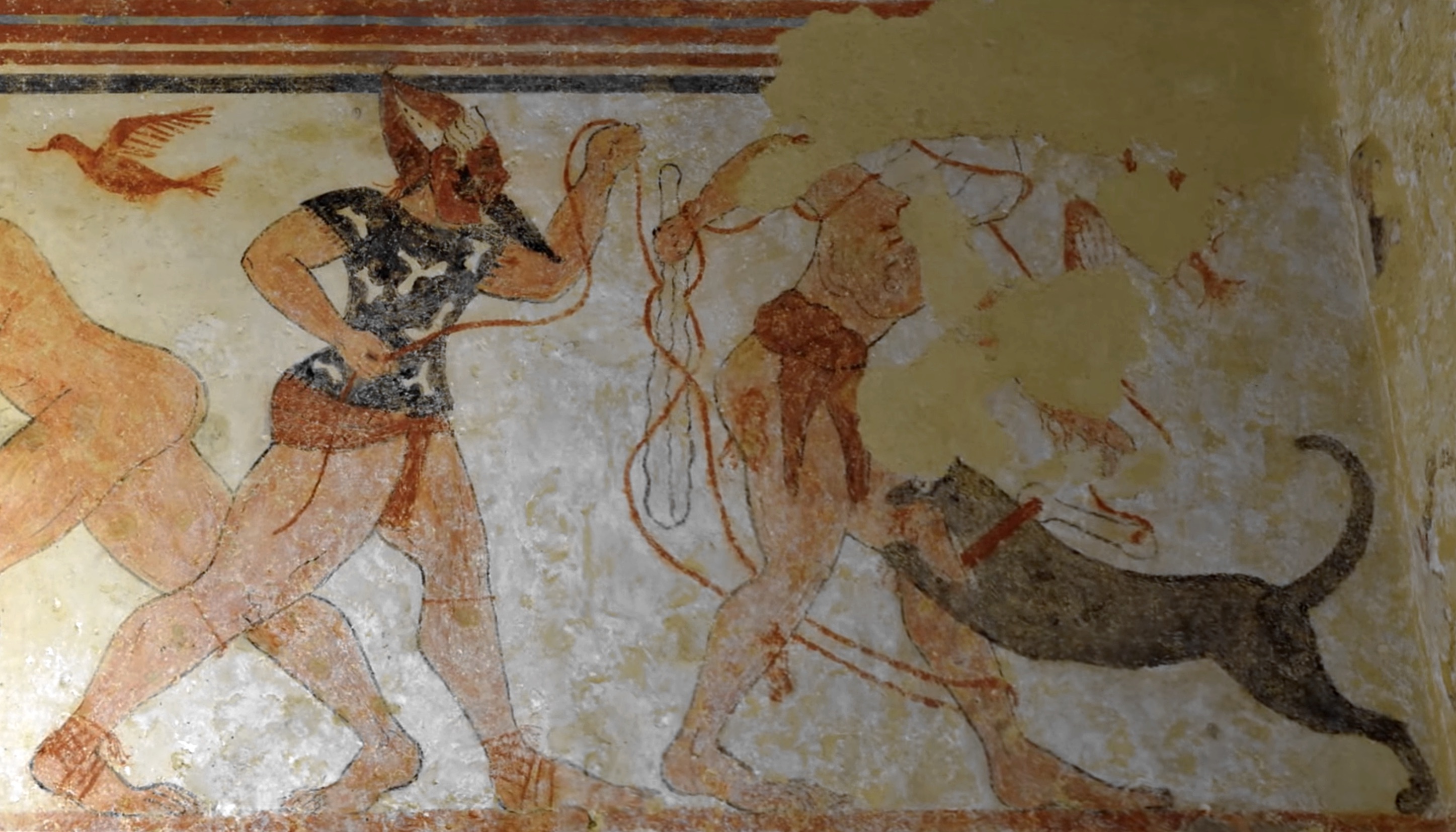
The Etruscans An Introduction Smarthistory
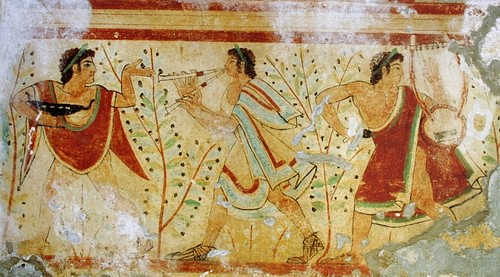
Tarquinia World History Encyclopedia
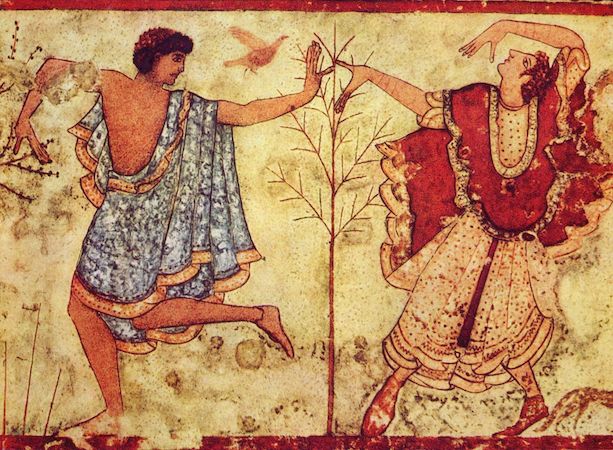
Tomb Of The Triclinium Article Khan Academy
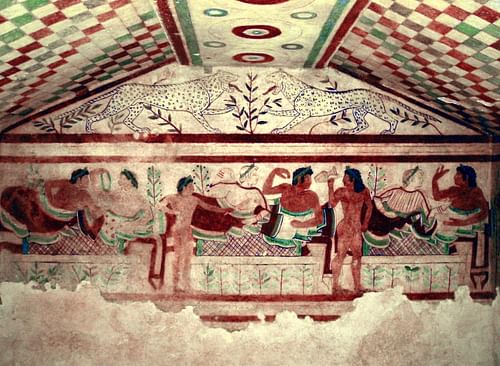
Etruscan Tomb Paintings World History Encyclopedia

تويتر The Ancient World على تويتر Copies Of Etruscan Tomb Paintings C 5th Century Bc On Display At The Ny Carlsberg Glyptotek In Copenhagen Denmark 2019 Https T Co 4usvyqicma
0 comments
Post a Comment